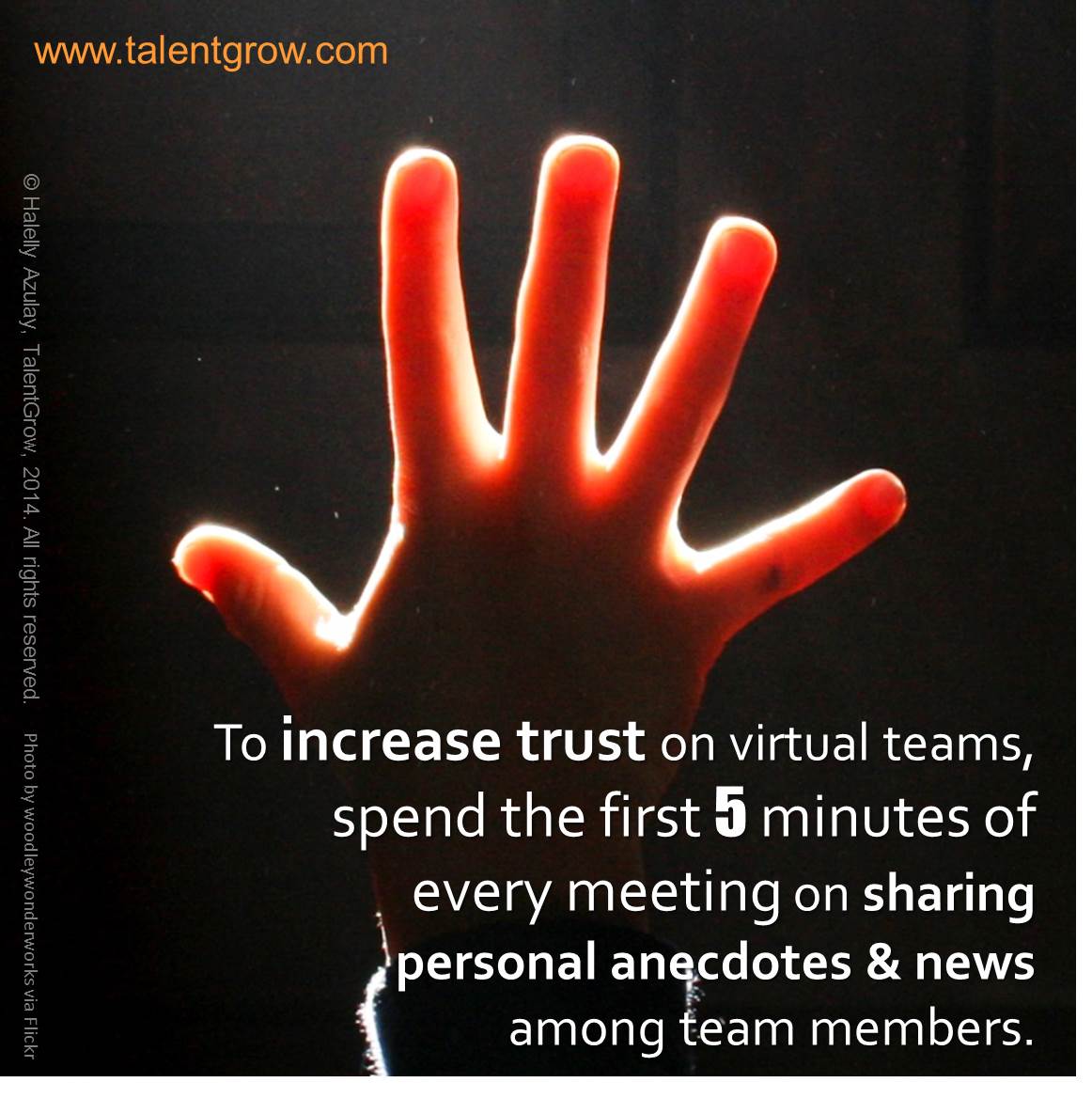3.5 Ideas for Building Trust (even if it’s virtual)
/Trust is a tricky subject. It comes up a lot in my conversations with leaders and teams because it is extremely complex and there are lots of obstacles in the way of building trust. I just put the final touches on a full-day workshop solely on this subject for one of my clients, and thought I’d share 3.5 great ideas that may help you increase your ability to generate and sustain trust with others.
Idea #1: Different factors can affect trust – it’s a multi-faceted phenomenon.
According to my colleague Casey Wilson in his great book, The Cornerstones of Engaging Leadership, there are six key factors that can impact our willingness to put our trust in someone:
- Benevolence: Do you assume people can be trusted unless they prove untrustworthy, or are you a person who suspends trust until it is earned? Benevolence is your willingness to assume a positive intent on the part of others.
- Competency and ability: It’s easier to trust someone we view as competent and able to do the task than someone who lacks this ability. But it’s not the only trust ingredient, and we’re often willing to give someone a chance to learn and develop in an area they have not yet mastered when their intentions are good and when we have other reasons to trust them.
- History and experience: We can more easily trust someone who has consistently demonstrated trustworthy behaviors. This experience and history impacts current and future trust.
- Organizational culture: Social norms influence personal trust among members of an organization. In some organizations there is a high trust level and in some there is an overall low willingness to trust others, usually created over a long period of time and are hard (but not impossible) to change.
- Power and authority: A power-differential can go both ways. We can be more guarded with trust if we’re concerned that a person with power may use information we disclose to cause us harm such as to affect assignments, job security, or work environment. However, we may trust a person of authority simply because we assume that by virtue of their role, they have greater credibility and competence.
- Similarities and differences: Humans are naturally attracted to those we perceive as being more similar to us. This is a defense mechanism deeply rooted in the human experience since our tribal beginnings. We have to avoid rushing to assumptions based on perceived similarities and differences, and also to try to build as many perceived similarities with those we’re trying to build trust with. The more we highlight commonalities, the more trustworthy we’ll appear and the more comfortable they will be to trust us.
Idea #2: Try to build the foundation of trust face-to-face, whenever possible.
So much of trust stems from interpersonal connections made during face-to-face meetings that it’s much more difficult to build trust on virtually. In today’s dispersed workplace, this is a significant effort and expense, but look at it as an up-front investment that will pay dividends in effectiveness, efficiency, productivity and quality.
Idea #3: You can grow and sustain trust virtually if necessary.
Researchers have also found that trust can be built virtually and does not absolutely require face-to-face interaction. What’s the secret? RELIABILITY. Best-selling author Keith Ferrazzi describes three types of trust: Swift trust, interpersonal trust, and task-based trust. Trust built through spending time together, eating meals, sharing small personal details in social interactions creates “swift (benevolent) trust” (initially) and “interpersonal trust” (through interactions over time). However, when we work virtually with others we can capitalize on the third kind of trust – “ability/task-based trust” – by creating repeated patterns that show us as reliable, consistent, and responsive. Virtual trust stems from demonstrating reliability.
Idea #3.5: Add the ‘Take 5’ habit to your team’s practice to enhance trust.
Start all your team meetings with a “Take 5” habit. All that means is that you regularly, habitually spend the first five minutes of every team meeting by having each member tell others one bit of news about the their life (both professional and personal). This practice helps create empathy and camaraderie and builds connections and trust. (This one is also from Keith Ferrazzi and my clients have loved it.)
What are your best ideas for building trust? Share them in the comments below.
Get more tips, news, and articles like this in Halelly’s free weekly newsletter. If you use this link [http://eepurl.com/PTIRn] to sign up (it’s fast and easy!), we’ll send you a free bonus guide on “How to Influence Even Without Authority”!
Trust photo by Flickr Creative Commons user TerryJohnston
Hand photo by Flickr Creative Commons user woodleywonderworks
[Edited on 3/4/14 (typo fixed) by Halelly Azulay]
Sign up to my free weekly newsletter and get more actionable tips and ideas for making yourself a better leader and a more effective communicator! It’s very short and relevant with quick tips, links, and news about leadership, communication, and self-development. Sign up now!
Also, subscribe to my podcast, The TalentGrow Show, on iTunes to always be the first in the know about new episodes of The TalentGrow Show! http://apple.co/1NiWyZo
You Might Also Like These Posts:
Six Principles of Effective Communication
Who Cares Whose Idea it Was? Why People Love Your Idea Much Better if They Thought of it First



